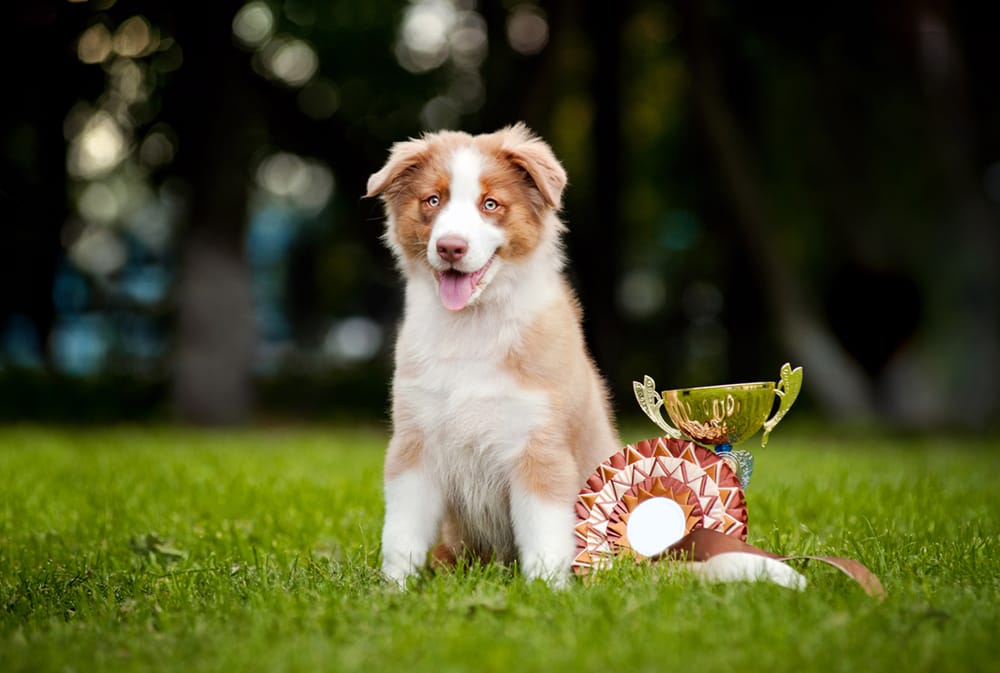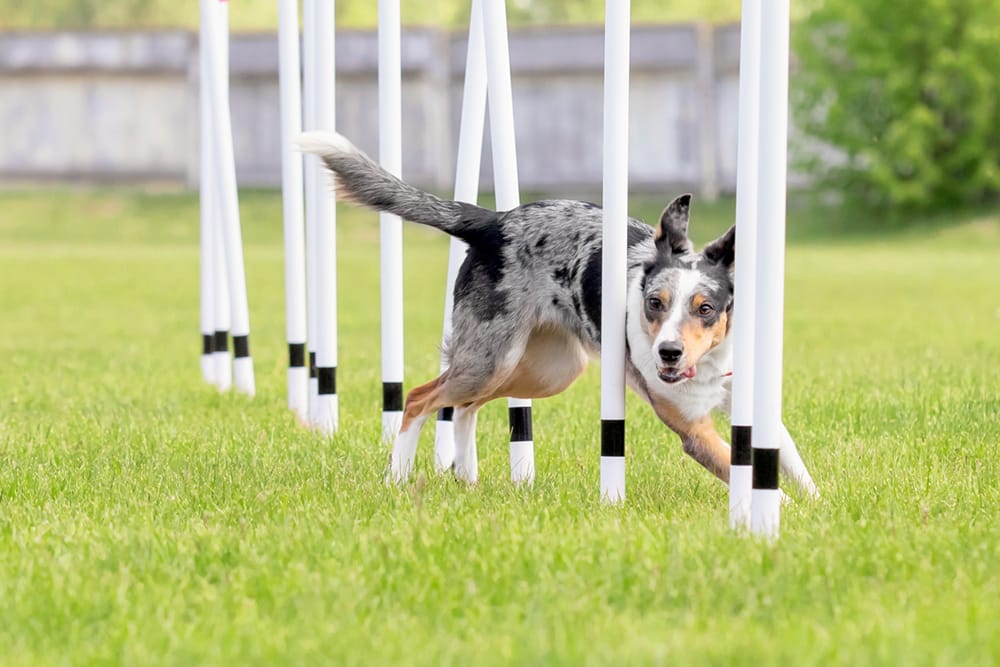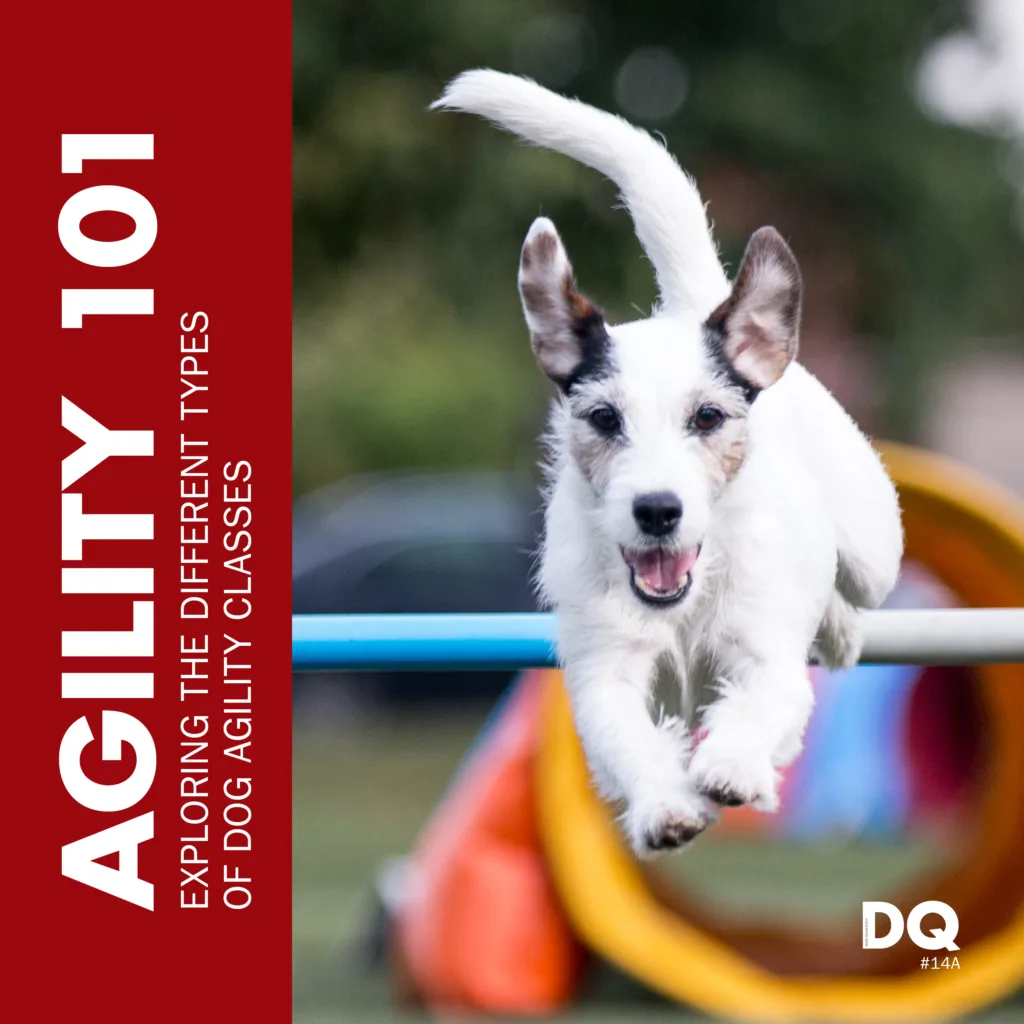If you’ve ever watched a Border Collie blaze through a tunnel, sail over jumps, and whip around weave poles like a pro, you’ll know how exciting dog agility can be. But did you know that agility isn’t just for elite competitors? There are many types of agility classes designed to suit every dog, from beginners to seasoned speedsters, and every handler, too.
Whether you’re looking to compete, bond with your dog, or simply try something new, there’s a class to match. Here’s a guide to the main types of dog agility classes you’ll find in South Africa and around the world.

Core agility formats
1. Foundation agility classes
Best for: Puppies or dogs new to agility
Focus: Confidence, basic handling, fun
These beginner-friendly classes don’t involve full-height equipment or timed runs. Instead, they focus on building your dog’s confidence, introducing basic cues, and teaching handling skills like turns, targeting, and attention. It’s a great starting point to prepare for future agility while ensuring your dog’s body and mind are ready.
Top tip
Many instructors offer ‘Puppy Agility’ or ‘Pre-Agility’ courses for dogs as young as four to six months, using safe, low-impact obstacles.
2. Recreational agility (just for fun!)
Best for: Dogs of all breeds and ages
Focus: Fitness, mental stimulation, teamwork
Not all agility classes are competition-focused. Recreational agility offers the fun without the pressure. You and your dog can enjoy navigating courses together in a relaxed environment. It’s ideal for owners who want enrichment, bonding, and exercise without worrying about scores or rules.
Bonus
Recreational agility is a great way to improve your dog’s off-lead control, focus, and recall in a safe, fenced space.
3. Competitive agility
Best for: Teams aiming for competition
Focus: Speed, precision, and teamwork under pressure
These classes prepare you and your dog for official agility competitions, such as those run under KUSA (Kennel Union of Southern Africa) or Fédération Cynologique Internationale (FCI) rules. You’ll learn how to handle sequences, read course maps, and improve obstacle performance under time constraints.
Dogs progress through grades or levels, often starting in ‘Grade 1’ or ‘Starters’ and advancing through clear rounds or titles.
In competitive agility, you’ll train on regulation equipment and work on speed, accuracy, and strategy.
4. Steeplechase
Best for: Dogs who love to run
Focus: Fast-paced courses with minimal technical handling
Steeplechase (or Jumpers with Weaves) is a fast and flowing form of agility that excludes more technical obstacles like the seesaw or A-frame. It typically includes jumps, tunnels, and weave poles. The emphasis is on speed and smooth handling, making it a favourite for energetic dogs and confident handlers.
5. Hoopers agility
Best for: Older dogs, large breeds, or those with joint issues
Focus: Low-impact agility using hoops and barrels
Hoopers is growing in popularity for its inclusivity. The courses are flowing and low-impact, with obstacles like ground-level hoops, tunnels, and barrels. It’s suitable for dogs who may not be able to handle high jumps or tight turns, but who still love to run and learn. Handlers often work at a distance, so it’s great for developing communication and focus.
6. Specialist or breed-specific agility
Best for: Breed clubs or niche groups
Focus: Tailored challenges for specific groups
Some clubs offer agility for certain breed types or sizes, like Small Dog Agility, Senior Dog Classes, or Rescue Dog Agility. These are often community-focused, encouraging participation without rigid rules. They help make the sport accessible and welcoming to a broader range of dogs.

Games based agility
In competitive dog agility, particularly under organisations like KUSA, UKI, USDAA, and AAC, the sport isn’t limited to standard ‘agility’ or ‘jumpers’ classes. There are a variety of speciality games-based classes like Gamblers, Snooker, Time to Beat, and others, each with its own set of rules and strategies. These are often used in championship-level events or offered as standalone challenges.
Here are some of the more common types:
1. Gamblers
Goal: Complete a course of your own design in the opening time, then attempt a bonus ‘gamble’ (a distance-handling challenge) for extra points.
Handlers collect as many points as possible by choosing their own obstacles in the first part of the course (each obstacle has a point value). Then, within a buzzered timeframe, they must complete a designated ‘gamble’ sequence, usually requiring the dog to work independently at a distance.
Gamblers is great for dogs with strong focus and confident distance skills.
2. Snooker
Goal: Follow a strict pattern of obstacles based on snooker rules, collecting maximum points before time runs out.
Snooker is a thinking game! Dogs must alternate between red jumps (worth points) and coloured obstacles (worth increasing point values), following a sequence determined by the handler, then complete a closing sequence. It’s all about planning, control, and knowing your dog’s strengths.
Snooker is great for strategic handlers and dogs who love mental challenges.
3. Time to Beat (T2B)
Goal: Beat the set time on a flowing course, without faults.
Each dog runs a pre-set course, and the fastest clean round sets the time to beat. Dogs that complete the course without errors and within that time qualify. It combines speed and precision and is popular as a ‘starter’ class at competitions.
Great for newer teams or those who want a balance of speed and accuracy.
4. Pairs or Team Relay
Goal: Complete an agility course as part of a two- or three-dog team.
Each dog completes a portion of the course before the next team member continues. These classes are exciting and full of cheering handlers!
Relays are great for sociable dogs, camaraderie, and working under pressure.
5. Other local variations
Depending on the venue or organisation, you may also encounter:
- Power and speed: A course split into two sections (one for accuracy, one for speed).
- Agility stakes: A combined score event used in championship qualifiers.
- Knockout or elimination rounds: Fastest team wins in a head-to-head format.

How to get started
Agility is open to all breeds and crossbreeds, as long as your dog is healthy, motivated, and enjoys learning. Look for clubs or instructors in your area who use positive reinforcement training, offer safe and age-appropriate classes, and can guide you at your own pace.
What to bring to your first class:
- A well-fitted harness or collar
- High-value treats or a toy
- Water and a bowl
- A can-do attitude!

Final thoughts
Agility is about more than jumps and tunnels, it’s about trust, teamwork, and having fun with your best friend. Whether you want to compete or simply add some variety to your dog’s routine, there’s an agility class out there for you and your dog.
Find a KUSA-accredited club or instructor near you at www.kusa.co.za, or search local Facebook groups for agility enthusiasts in your region.



